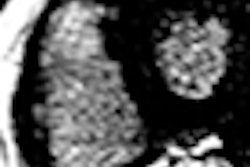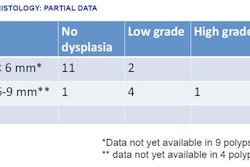
NEW YORK (Reuters Health), Dec 1 - A large study of revascularization strategies in diabetics with multivessel coronary artery disease, which set out to show that angioplasty is not inferior to bypass surgery for these patients, could not prove its hypothesis.
Results of the study are reported in the November 30 online issue of the Journal of the American College of Cardiology.
The investigators, led by Dr. Akhil Kapur, from London Chest Hospital, Barts, and The London NHS Trust, UK, do report that percutaneous coronary intervention (PCI) with stenting is feasible in diabetics with multivessel or complex single vessel coronary artery disease (CAD).
"The one-year results of the CARDia trial," they write, "did not demonstrate the noninferiority of PCI versus coronary artery bypass grafting (CABG) for revascularization of diabetic patients. However, the results suggest that there could be greater equipoise between the two strategies, with the decision to use CABG or PCI being based on information from clinical trials, clinician judgment, and patient preference."
Overall, 510 patients from 24 centers were randomized, with 256 assigned to PCI and stenting (bare metal initially, followed by sirolimus-eluting when available) plus routine abciximab and 254 randomized to CABG.
Rates of the primary outcome (a composite of death, nonfatal MI and nonfatal stroke at one year) in the PCI and CABG groups were 13.0% vs 10.5%, respectively (p < 0.39; HR, 1.25). This was driven by a higher rate of MI in the PCI group, the researchers note.
Rates of the secondary outcome (need for repeat revascularization added to the composite of death, nonfatal MI, nonfatal stroke) were 19.3% with PCI and 11.3% with CABG (p = 0.016; HR, 1.77).
All-cause mortality rates were the same in the two groups (3.2%).
The rate of further revascularization at one year was 11.8% with PCI versus 2.0% with CABG (p < 0.001; HR, 6.18).
Baseline clinical characteristics were well matched, and the number of diseased vessels, baseline creatinine, and left ventricular function were also similar between the two groups, the authors note.
In discussing why the event rate in their PCI group was higher than expected and why their noninferiority margin was not met, the researchers claim that their patients had more complex disease than subjects in earlier trials of PCI and CABG. For example, they note, 60% of their PCI patients and 65% of their CABG patients had 3-vessel disease.
They believe that while "the CARDia trial was underpowered for the primary composite outcome," longer follow-up will increase its power.
Summing up, the researchers say this study "provides the largest existing data set of diabetic patients with complex disease randomized to PCI or CABG."
"Longer term follow-up and data from other trials will be needed to provide a more precise comparison of the efficacy" of PCI and CABG for diabetic patients with multivessel or complex single-vessel coronary artery disease, the authors conclude.
J Am Coll Cardiol 2009.
Last Updated: 2009-11-30 13:35:10 -0400 (Reuters Health)
Related Reading
In proximal LAD disease, stents favored over minimally invasive coronary bypass, May 14, 2004
New PTCA, cath lab guidelines released by ACC and AHA, April 28, 2001
Copyright © 2009 Reuters Limited. All rights reserved. Republication or redistribution of Reuters content, including by framing or similar means, is expressly prohibited without the prior written consent of Reuters. Reuters shall not be liable for any errors or delays in the content, or for any actions taken in reliance thereon. Reuters and the Reuters sphere logo are registered trademarks and trademarks of the Reuters group of companies around the world.


















